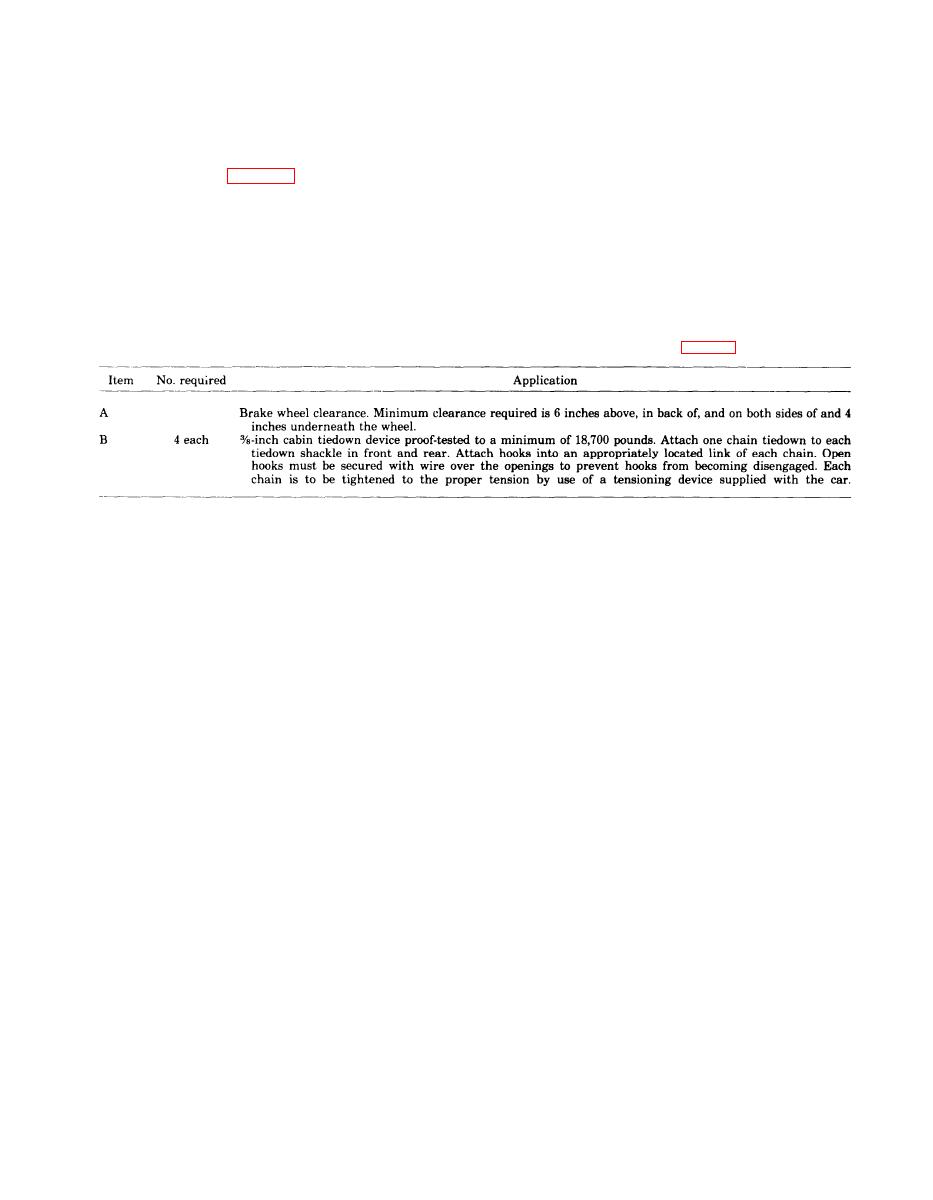 |
|||
|
|
|||
|
Page Title:
Section Ill. TRANSPORT ON FOREIGN RAILWAYS |
|
||
| ||||||||||
|
|
 TM 55-2320-289-14
30 January 1987
b. Bilevel railcars must meet the following criteria to transport the CUCVs:
(1) A width of 109 inches between columns.
(2) A height of 84 1/2 inches on the lower deck and 96 inches on the upper deck.
(3) A total capacity of 40,000 pounds on each level.
c. The application of chain tiedowns, as well as general instructions, for securing CUCVs on bilevel
cars is provided in table 7-9.
NOTE
When bilevel railcars are used, loading ramps will be needed at origin and destination points.
AR 55-351, Terminal Facilities Guide, lists all Army installations that have the capability to
receive or ship by bilevel railcars. If the receiving installation cannot offload because it has
no ramps, then ramps must be requested with the railcars.
Table 7-9. Application of Chain Tiedowns for Securing CUCVs on Bilevel Railcars (Fig 7-11)
GENERAL INSTRUCTIONS
1. The shipper should specify cars equipped with tiedown devices in the quantities shown in item B when
ordering specialized railway equipment.
2. Load binders are not to be used as tensioning devices.
3. Vehicles must face in the same direction and be uniformly spaced along the length of the car to allow
sufficient space at each end of the car and between the vehicles for securement. Apply tiedowns parallel to
each other at the same end of the vehicle and from the vehicle shackle to the car tiedown facility. The
angle of the tiedown should be as close as possible to 45.
4. Tiedown chains must be checked for twisted or kinked links before they are applied to the vehicles.
5. Parking brakes must be set and wire-tied.
6. Transmission selector lever must be placed in N (neutral) position and wire-tied or blocked.
Section Ill. TRANSPORT ON FOREIGN RAILWAYS
7-12. General
The transportability guidance contained in this section is applicable when the CUCVs are transported on
foreign railways. Consideration is given to single and multiple vehicle movements on the types of railcars
normally used for the movement of the CUCVs. The CUCV, when loaded on suitable railcars to comply
with the Gabrit Internatioanl de Chargement (GIC) gauge, can be transported without restriction with Eu-
ropean countries, in most countries in the Middle East, and in South America, Australia, India, and Paki-
stan. In the Middle East and South America, the clearance varies by country and each country will re-
quire a separate check. In Australia, India, and Pakistan, wide or broad gauge railways provide greater
clearances and fewer restrictions. Because of the various classification systems used by different countries,
foreign railcars are not easily classified. In addition, clearances vary from country to country; therefore,
evaluation of transportability capability must be made for each country.
7-21
|
|
Privacy Statement - Press Release - Copyright Information. - Contact Us |